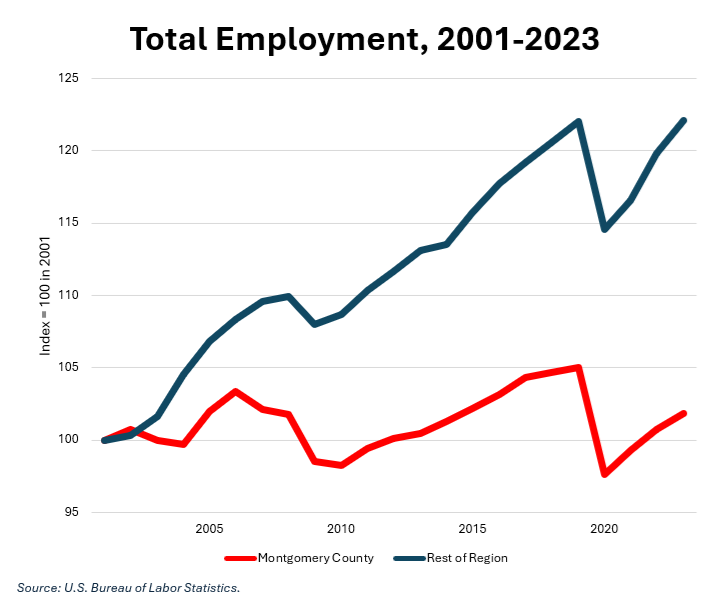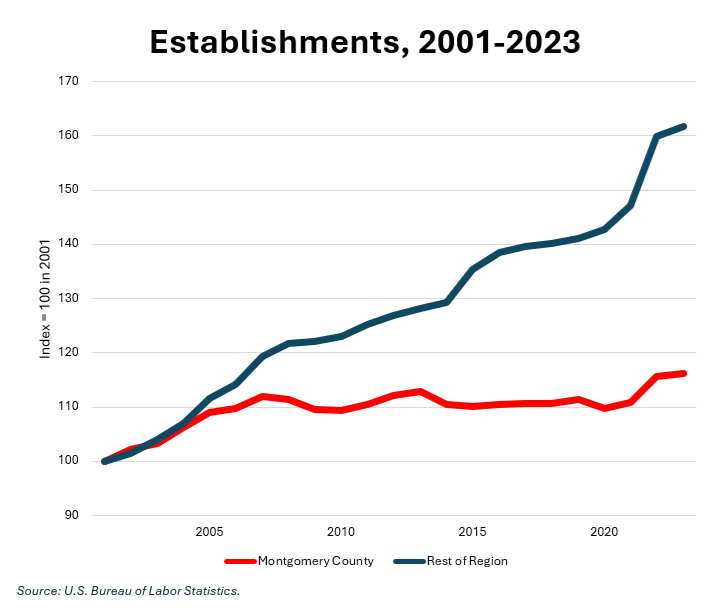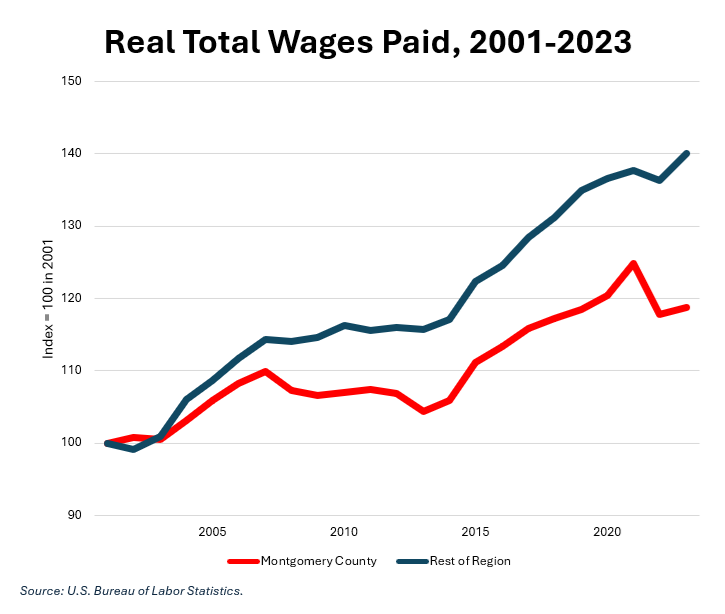By Adam Pagnucco.
Part One introduced this series. Part Two examined total employment. Part Three examined private employment. Part Four examined establishments. Part Five examined real total wages paid by employers. Today, let’s wrap it up.
The charts below compare us to the rest of the Washington-Arlington-Alexandria Metropolitan Statistical Area on each of the four measures mentioned above. The base year is 2001, when the U.S. Bureau of Labor Statistics’ Quarterly Census of Employment and Wages (QCEW) program, which supplies the content of our posts, began its current data series. To facilitate comparison, a base of 100 is assigned to both Montgomery County and the rest of the region so that trends are easily apparent.




That’s quite a record, yeah? These are four of the most important economic indicators for any local jurisdiction and we have been losing ground on them to the rest of the region for roughly two decades.
These charts say a lot. I will add a few things.
I started writing about our local economy all the way back in 2007. At that time, our competitiveness issues were not as apparent as they are today. But resistance to development – a major issue in county politics 20 years ago – was limiting economic growth and thereby constraining our county budget. That political dynamic has since changed but our budgetary needs have not. If anything, our needs are much greater than in the antique days of old. That requires our economy to be stronger – and it’s not.
When I first started ringing alarm bells about our economic shortcomings a decade ago, most county leaders initially reacted with denial. The stats were wrong, we’re still better than Virginia on other things, it’s temporary, you’re just stirring up trouble… and so on. After many years of falling short, today’s leaders mostly avoid such rhetoric. Even County Executive Marc Elrich, who built his early political career on fighting development projects, now says he wants economic development.
But in practice, the actual reaction to our economic issues falls mostly into two categories: public relations (like touting anecdotal bright spots) and corporate welfare, on which we have been spending millions with little substantial impact. What our leaders have not sufficiently learned – or won’t learn – is that the economy needs to be a consideration in virtually all policy making. That includes legislation, regulations, budgets, taxes, fees and land use for starters. I give the county favorable marks in understanding the relationship of economic growth and land use planning, but in the other areas, the economy is usually ranked behind everything else.
I am going to say this straight out: you can’t pass laws and tax hikes that kill jobs, neglect your police department and tolerate dysfunction in MCPS’s central office and then market your way out of it. No one will believe your marketers and folks who can leave will leave, taking billions of dollars with them to Florida and Virginia.
It doesn’t have to be this way. With the right leadership, it won’t be this way. But before we get there, it’s time to admit what the stats in this series show and what we have now known for long enough.
What we are doing is not working.
